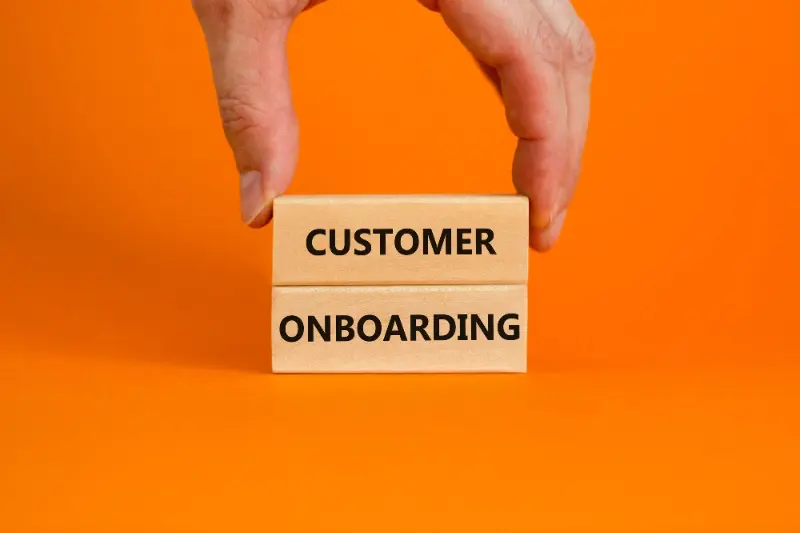Pronto Enterprise Enquiry
One of our team our standing by to help. Simply complete the form below and we'll be in touch with you right away!

The process of tracking your company’s success in the context of onboarding has changed hugely in recent years. In this post-Covid world of talent shortages and increased employee turnover, there is a specific set of customer onboarding metrics that need to be continuously measured and monitored for the benefit of your business.
In this article, we examine the essential onboarding metrics that you should be tracking to ensure a seamless and successful onboarding process that continues to perform long after the initial retention process has been completed.
Referencing customer onboarding metrics should be a frequent and integral component within your overall business operations. Why? Because it decreases customer churn and promotes customer retention.
Furthermore, it enables you to identify any potential gaps in your onboarding process or areas in need of improvement, as well as providing an opportunity to examine its overall effectiveness. By honing in on these trouble spots and making adjustments where required, you showcase your ability as a business to truly listen to what the customer wants. As a result, two core areas can see a vast improvement: the customer experience and the onboarding experience as a whole.
Now, it stands to reason that every business will have a different range of customer onboarding metrics to track, and this will be largely dependent on the type of business it is, the sector they operate within and its objectives and targets. However, there are a handful of metrics that should ideally be relevant across the board.
While a quick onboarding process equals a faster ROI, it is vital to ensure adequate time is given to allow the customer to understand the product to such an extent that they are comfortable enough to use it confidently and independently.
Tracking the time it takes for each onboarding session to go from start to finish will highlight your company’s performance in this area. Perhaps your overall completion time is exemplary, or maybe you will identify a need for speed at this particular stage. Whatever the case may be, it is crucial to track this important metric so you can get yourself off to a running start.

Once the customer is flying solo with your product, the hope would be that they are using it efficiently and effectively, making optimal use of each of its features.
By monitoring the customer engagement rate, you gain insight into the aspects of your product that are user-friendly and those that tend to be avoided. This will identify the areas that may require further training to ensure an extensive understanding of the product and subsequently, guarantee it is used in a way that garners the best results.
Closely linked with onboarding completion time, the time-to-value (TTV) metric references the amount of time it takes for a user to start benefiting from the product. The shorter the TTV, the more effective your onboarding process is in terms of its educational prowess and ease of use.
To achieve this, the product will require a bespoke configuration, structuring it in such a way that it allows the user to achieve their desired business outcomes in a simple, efficient way.
Once the initial onboarding stage has been completed and your customers have begun to engage with the product, it is time to measure your performance further by examining the subsequent retention rate.
This is a key metric for determining if and why the churn rate is higher than it should be.
By logging the number of new users over a day, a week, a month and so on, you will quickly be able to calculate the percentage that has lasted the course. What’s more, it will pinpoint when – and potentially why – those that dropped out hit a wall with your product, enabling you to identify and troubleshoot specific areas of concern.

Feedback is an essential tool that supports the function of integral metrics. It gives you direct insight into the mind of the customer, essentially handing you vital information on a plate.
As such, tracking customer satisfaction as a key metric can be greatly aided through the use of surveys.
These can be designed to gauge a general feeling regarding the software in use or can be detailed in their quest to hone in on certain problem areas that may be causing difficulty for a significant percentage of users.
Whatever way you decide to tailor these surveys, one thing is for sure; they will be invaluable to you in their ability to measure CSAT.
Every touchpoint encountered throughout the customer journey can shed light on how the onboarding process is performing. It is therefore vital to rely on software that ensures none of this crucial information falls through the cracks, and this is where Twilio comes in.
With endless capabilities that enable businesses to track metrics and measure valuable insights, Twilio helps to get your customers onboard and keep them there, ensuring their needs are met and their satisfaction remains watertight.
Getting the best out of your Twilio integration is crucial, and this can be achieved with the help of Kaptea.
Our expert team is on hand to design, build and manage your integration, ensuring you can reap the benefits of determining crucial analytics and insights regarding your business. With our partnership, you can focus on managing your teams while we delve into the metrics you need to drive bottom-line results as you grow.
Know you’re not alone with our expert support. Contact us today to talk to one of our experts, and head over to our blog and knowledge centre to check out all the latest news.